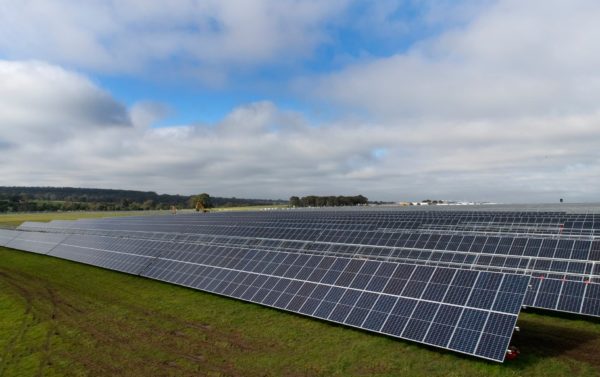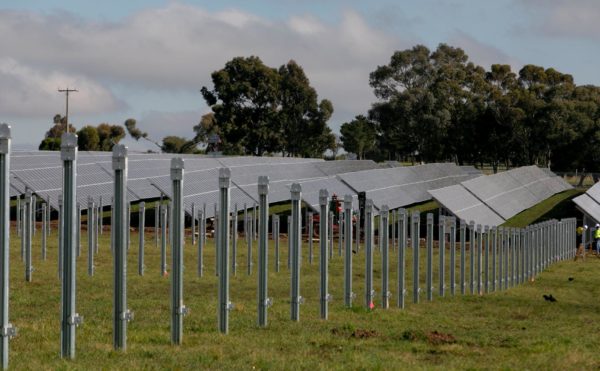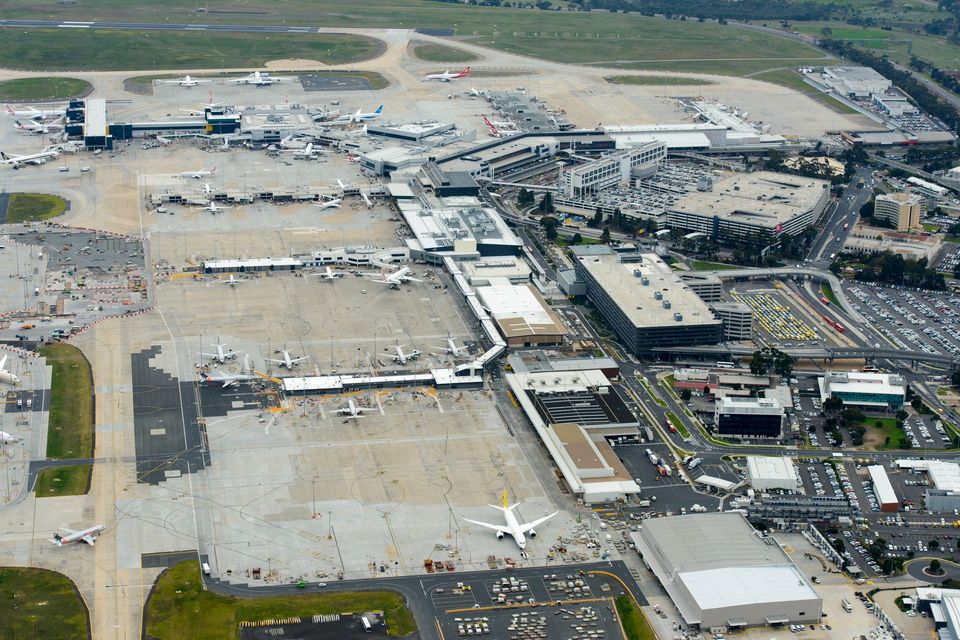Melbourne Airport has committed to continued investment in renewable energy generation after officially opening a 12 MW solar farm which is expected to produce enough clean energy to power all four of the airport’s passenger terminals.
Comprising an estimated 30,000 solar panels spread across about 192,000 square metres under the approach to the north-south runway, the new solar farm is expected to generate 17 GWh of renewable electricity every year, equating to almost 15% of the airport’s annual electricity consumption.
But that target is set to be eclipsed in the coming years with Melbourne Airport chief of infrastructure Simon Gandy declaring that by the end of the decade more than 50% of the airport’s energy needs will be met by on-site solar generation.
Gandy said the continued investment in renewable energy forms part of the airport’s commitment to reach net zero emissions by 2025.
“While our primary job is to move passengers and freight safely and efficiently around Australia and the world, we are committed to doing so in a way that is environmentally responsible,” he said.
“We know that achieving net zero Scope 1 and 2 emissions by 2025 is ambitious, but we also recognise that we need to take big steps to tackle the challenges we face as a global society.
“We will achieve our target by reducing our energy footprint through operational and technology efficiencies and sourcing our future energy demands through renewable energy generation.
“This means that by 2030 we expect to have more than 50% of our energy needs met by expanding our on-site solar generation facilities, with the remainder of our energy requirements procured through dedicated power purchasing agreements directly linked to high-quality solar and wind farm developments in Victoria.”

Image: Melbourne Airport
Gandy said in addition to the Scope 1 and 2 emissions targets, the airport is also developing a strategy for Scope 3 emissions, working closely with airline and ground transport partners, airport tenants and broader supply chain to reduce emissions across the aviation industry.
The first element of that strategy has already been delivered with a 2 MWdc rooftop solar system recently installed atop Agility Logistics’ new headquarters in the Melbourne Airport Business Park.
The system, featuring more than 4,000 solar panels spread across approximately 30,000 square metres of roof, will connect into the airport’s embedded network.
The new 12 MW solar farm was developed by Beon Energy Solutions contracted with Next Generation Electrical. The team used Canadian Solar monofacial panels mounted on a fixed ground racking system specifically selected to avoid glare in the vicinity of the airport’s runways.
Melbourne Airport chief of ground transport Jai McDermott said airport management had capitalised on flight cancellations caused by Covid-19 to install the panels with construction taking just over six months to complete.
“While the airport was definitely quiet on most days through the pandemic, we were able to crack on with a great project,” he said.

Image: Melbourne Airport
Victoria Energy Minister Lily D’Ambrosio has praised the introduction of the solar farm.
“This very much fits in with our government’s own ambitions when it comes to achieving net zero emissions by 2050, and importantly, halving our emissions by 2030,” she said.
“It shows what you can achieve when you make a decision, you set yourself clear ambition and you take actions that can be seen and replicated.”
Melbourne Airport’s new solar farm is one of the largest behind-the-meter solar installations in the country, and the largest at any of the nation’s airports.
Brisbane Airport is home to 6 MW of solar, 5 MW of which is installed on its rooftops, while 1 MW is ground mounted, while Darwin Airport is continuing to build out its renewable generation capacity.
Darwin Airport announced last year work had begun on a 4 MW rooftop install across four buildings at the site. The $5 million project was to complement two existing solar farms and rooftop systems totalling 6 MW, which last year produced more than 8 MWh of renewable energy, enough to support 84% of the airport’s operations.
This content is protected by copyright and may not be reused. If you want to cooperate with us and would like to reuse some of our content, please contact: editors@pv-magazine.com.









By submitting this form you agree to pv magazine using your data for the purposes of publishing your comment.
Your personal data will only be disclosed or otherwise transmitted to third parties for the purposes of spam filtering or if this is necessary for technical maintenance of the website. Any other transfer to third parties will not take place unless this is justified on the basis of applicable data protection regulations or if pv magazine is legally obliged to do so.
You may revoke this consent at any time with effect for the future, in which case your personal data will be deleted immediately. Otherwise, your data will be deleted if pv magazine has processed your request or the purpose of data storage is fulfilled.
Further information on data privacy can be found in our Data Protection Policy.